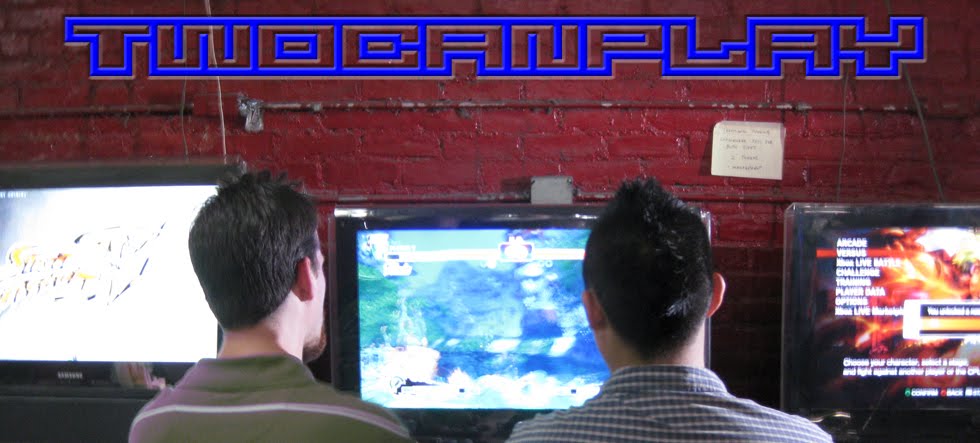Marvel versus Capcom 3 is the eighth entry in “Versus” franchise and the second entry for this generation of home consoles. It oozes with style, capturing a comic book aesthetic in everything from fonts to stage designs. Small touches of fan service permeate MvC3 with character theme songs, scenario specific commentary before fights, and signature moves. Still, coming off SSF4 and seeing the scope of Capcom’s vision for next generation fighting games, not everything is perfect. Read on for my review of MvC3 or watch the video review. Hell, do both!
Not to split hairs over character count or quality, it is worth noting some veterans like Mega Man and Juggernaut are not coming back as playable characters. Sure, we all have our favorites, but with MvC3’s roster of 36 characters, it is time to make some new friends. I instantly loved Deadpool, his 4
th wall wackiness and moonwalk animation sold me after the first fight. Phoenix and Dante are also notable favorites.
In offline mode there is the usual Arcade, Verses and Training modes. There is also a mission mode, but that is basically the challenge mode from SF4. Combat is more a reflection of the most recent Wii title, Tatsunoko vs. Capcom, trading kicks and punches for simple attacks. Light, medium, heavy and special are the four attack types; with special being more of a launch/exchange button for air combos. Exchange is when an opponent is being pummeled by an air combo, and you would simply tap special attack + any direction to exchange partners and keep the combo going. As with most “Versus” titles, you are on a team of three, so you have two more assist buttons for switching in and out partners. While the button count remains the same as other Capcom fighting games, the basic combat system is much simpler than it has been in the past. The basic combo is low -> medium -> high and although the animations will vary, the result is always a combo. It makes the offense based combo system more approachable to casual fighting fans.

Defensively, there are a number of new systems in place, such as the Advanced Guard. Blocking an attack and tapping two attack buttons will have your character pushing their opponent and creating space between their attacks. The snapback system returns from MvC2, where a player can force their opponent to switch characters at the cost of a hyper combo bar. You can also use the bar for a crossover counter, exchanging a partner and effectively nullifying your opponent’s combo. Similarly to the crossover counter, you have an aerial exchange counter. It has the added cheese factor of requiring you to tap the special attack and + same direction as your opponent during an air combo. It is pretty much a one in three chance of you choosing the right direction (left and right are interchangeable). It all works and feels as simple as it sounds. The crossover combinations cover the screen with awesome sauce, hyper combos are devastating to opponents and add that sense of complete chaos you could only find in MvC.

For the fighting game purist migrating from SSF4, expectations for an equally as robust online component should be reasonable. Capcom though makes no promises and delivers something less than it is capable of providing. The features clearly lacking are the replay theater and spectator modes, something that should be an established feature by now. Surely, it will be patched in time, but the community would rather wait for a completed game than get something earlier, loosing interest before that patch drops. Still the netcode is solid, there is a lobby system which is reminiscent of tournament mode and player/ranked matching. Your player data is stored in a license card, basically a passport showing other players all the content you have explored in the game. The license also has some personalization options, letting you list your top 3 teams and various aesthetics. To really open up the gallery, you need to complete the game with each character. The reward is various bits of media; i.e. BGM, dossiers, 3D models, art, etc. The biggest thing that was missing was some sort of teaching system; a series of videos or in-game scenarios explaining when and why particular techniques are appropriate. This training system could bridge the gap between casual players and fighting game fans.

There are sites that can provide such knowledge like
www.shoryuken.com or
www.eventhubs.com, but if this was in-game, players would never have to leave the couch. The “Versus” franchise from Capcom has always been popular. While Marvel versus Capcom 3 is a fantastic romp, it’s not pushing to evolve the brand or genre, leaving us a little disheartened. The combat is fun, visuals stunning, and the music may even “take you for a ride”. Casual gamers will likely find little meaning behind all that flash. The hardcore on the other hand, are feverishly awaiting the next patch.
Note: all pictures and video were captured in-game using an HD PVR
Republished from Bitmob.com




No comments:
Post a Comment